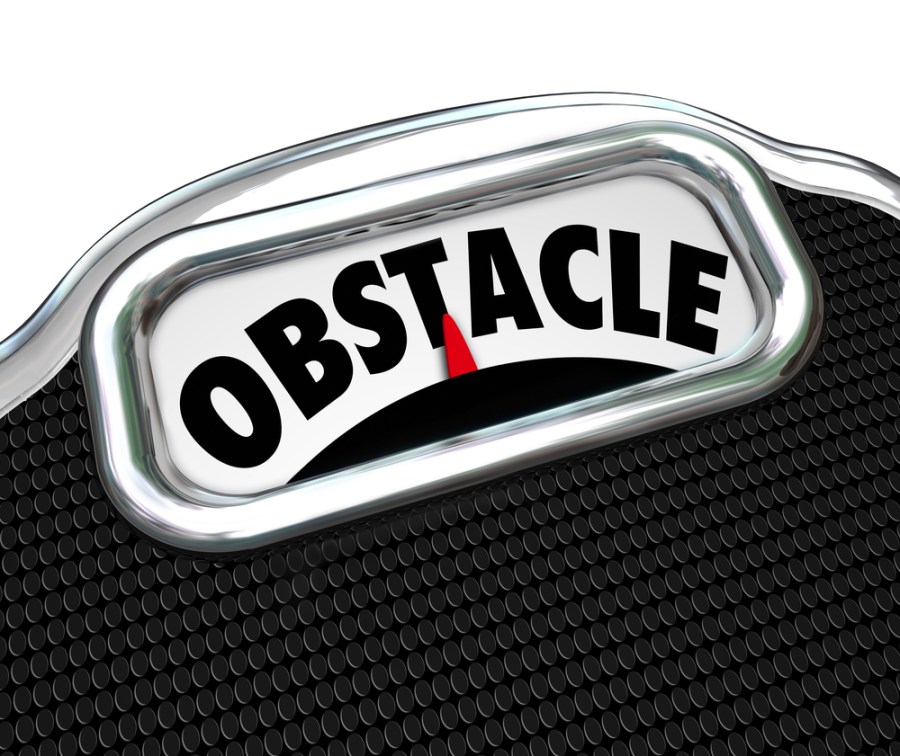We tackle common barriers to weight loss that stop many people getting into shape so that you can focus your mind and stick with your exercise routine.
Barrier 1: ‘I get so hungry in between meals’
Solution: Try to keep your blood sugar levels stable by eating four or five smaller meals throughout the day (just make sure the portion sizes aren’t too big) and avoid going for long periods of time without anything to eat. Each snack should be around 200 calories (see portion sizes guide on page 32 and box below) and containing lean protein such as egg, fish, chicken, tuna or salmon. Protein is more filling. A small handful of nuts instead of a sugary snack is a much better option and will also help keep you full, but don’t eat too many! A small amount will do.
Barrier 2: ‘I tend to snack on the way home from work’
Solution: Firstly, take some comfort in the fact that you’re not alone. A recent study revealed that commuters who endure long and stressful commutes eat an average of 767 extra calories per week due to snacking during train long journeys and having less time at home to prepare healthy meals. Carry healthy snacks with you, such as nuts and fruit, and follow some of the 15-minute recipes in this guide so that when you do get home, you won’t be daunted by the idea of preparing a fresh meal.
Barrier 3: ‘I don’t have time for exercise’
Solution: Break up your workouts. If you don’t have time to do the workouts here all at once, or you need to split the cardio guidelines we’ve given you into two separate chunks during the day, that’s fine – so long as you do them. Our workouts have ten exercises but everyone gets those occasional crazy days, so we’ve given you a choice of four best moves if you get the odd day where you can’t do all ten. If you genuinely feel that time is not on your side, think about what else you during the day and where the gaps in your day might be. Do you watch TV for an hour most evenings? Even cutting TV time down to 30 minutes daily will give you a half an hour window in which to exercise. Can you exercise at home while the TV is on? If you really feel you don’t have time then try keeping a ‘time diary’ and listing what you do all day every day for the next week. It sounds laborious, but it will give you a great insight into how you are spending your time and whether time is being wasted. With better organisation or planning, you may find a ten-minute window at lunchtime for a brisk walk. It all adds up!
Barrier 4: ‘I feel too tired to exercise after a day’s work’
Solution: Ask yourself if you feel mentally or physically tired. Usually fatigue is mental, unless you’ve got a very strenuous job! Once you get out for a walk, jog or do a class you’ll feel better once the blood and oxygen are flowing more freely around the body and you’ll also clear your head. You could try mind games. Tell yourself you’ll only exercise for 15-minutes as you’re tired and if you still feel tired at the end of that time you’ll stop. Chances are, you’ll want to continue and do more.
Barrier 5: ‘I don’t find exercise enjoyable’
Solution: You need to find what you enjoy as no amount of willpower or discipline will work in the long term if you don’t enjoy what you are doing. Find something you can imagine yourself doing regularly – maybe try swimming lessons so that you can improve your technique, take up cycling if you like being outside in the fresh air or jogging through pretty trails, or a new exercise class with a friend. Find that one thing that works for you that you actually look forward to, rather than dreading! Keep experimenting and trying new things until you do.







